Gstōlt: Constructing a Shared Reality with Courage and Curiosity
Gstōlt is a project about giving space to the unspoken. Over the course of 3 months, the team facilitated interactions between BASIS and the Schlanders-Silandro community, addressing historical trauma, eliciting curiosity and community engagement. Through several participatory workshops, members of the community were involved in creature-making and storytelling, leading to the gentle re-emergence of a local tale, and its metabolisation into an installation, a written fairy tale, and a procession.
The project was undertaken in Schlanders-Silandro, South Tyrol, in partnership with BASIS Vinschgau Venosta, a left-leaning social and cultural hub. The project was situated within the former Drusus barracks, home of BASIS. Having been used by the Nazis, Italian fascists, and American troops, the location is charged with the tumultuous history of the region. The region was shaped by shifting identitarian forces since 1919, including the suppression of German and Ladin languages and culture, and the forced assimilation of the local population through the "Option" policy, which divided the South Tyrolean community, causing lasting trauma.
Within the framework of the Master in Eco-Social Design study course, Gstōlt aims to respond to BASIS's request to activate the outdoor space in front of their building in a way that was meaningful to the local communities. The project intended to address the historical trauma of the area through a playful, creature-led method, using puppets to encourage interaction rather than avoidance. Gstōlt created a space for community interaction to address historical trauma, and foster meaningful conversations through creative and participatory methods, acknowledging the project's context within the complex history of South Tyrol.

Landing
We began our project in partnership with BASIS Vinschgau Venosta, committing to a collaborative design process. Initial research involved visiting the project site, a former military barracks, and reflecting on the site’s history of violence through the remnants of Nazi maps and fascist propaganda. We focused on articulating project tasks, distributing responsibilities, and reflecting on our roles as change-makers. A key starting point was the desire to work with puppets, viewing them as tools to connect to local and international stories, and bridge traditional and contemporary ideas. We also focused on understanding individual needs and learning goals, and debriefed from our previous project Autonarrazione.We adopted a flexible design framework that focused on continuous listening and response, drawing on concepts of 'tinkering' and 'care'. The team also mapped the context of our partner, including the land, communities, and histories, through cultural probes and autoethnographic tools, observing people and their surroundings, and experimenting with making a first creature.

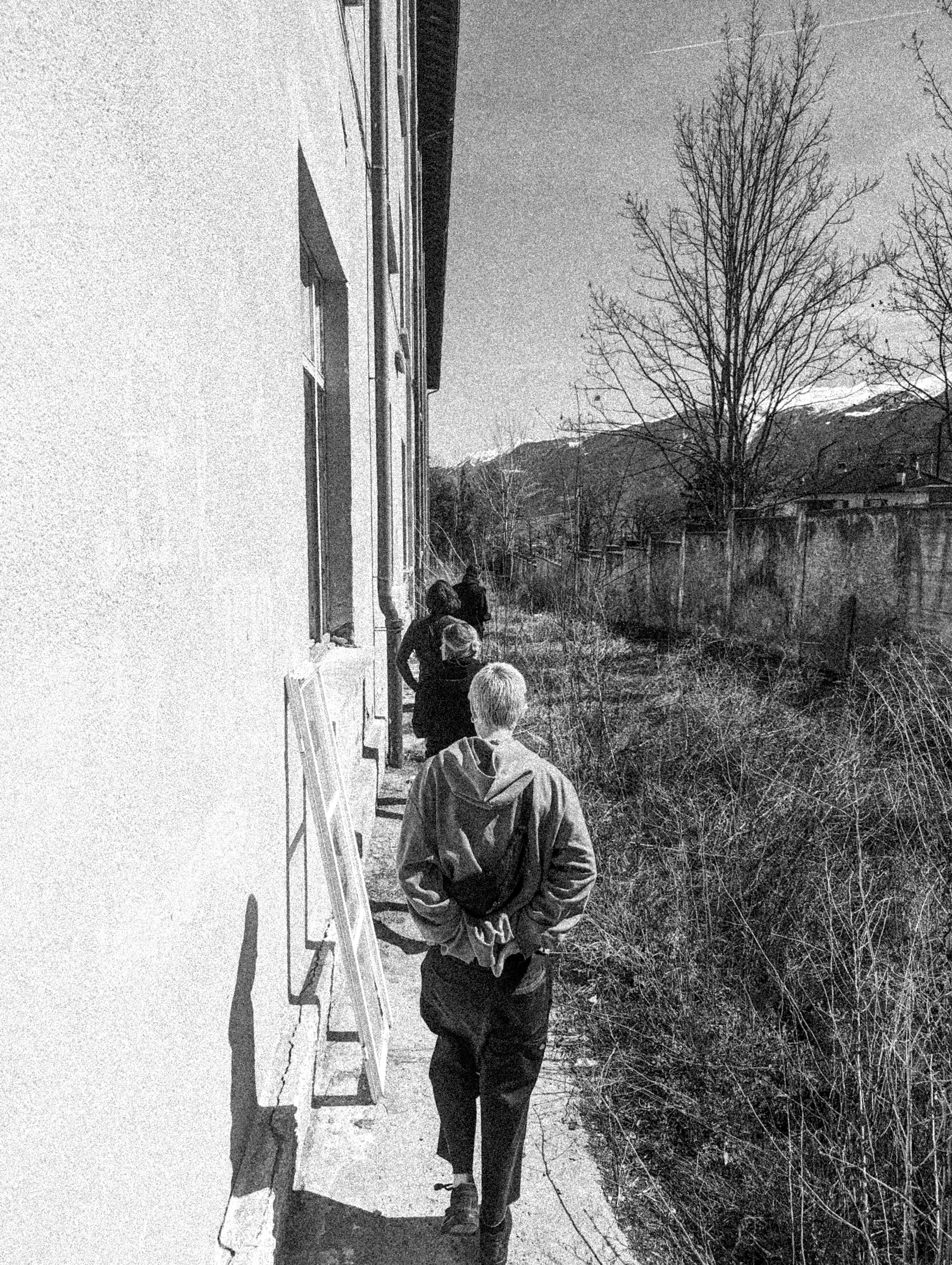

Finding
The project’s location in Schlanders-Silandro, a region with a history of shifting identities and cultural suppression since 1919, profoundly influenced the project. The imposition of Italian identity, including language bans, and the forced choice of the "Option" policy, created divisions and trauma within the community. Our goal was to activate the outdoor space of BASIS with a method that centred on play and creatures to interact with historic trauma. Initial workshops at BASISLOKAL involved creature making, but we quickly realised the need to directly explore the area’s violent history and associated myths. During a workshop focused on conversation, the folklore of a dragon and its destruction emerged, providing a point of connection to the community’s past. The team then researched the legend of the dragon of Gadria, which is associated with a local town, its destruction, and the town's resistance to Christianity.

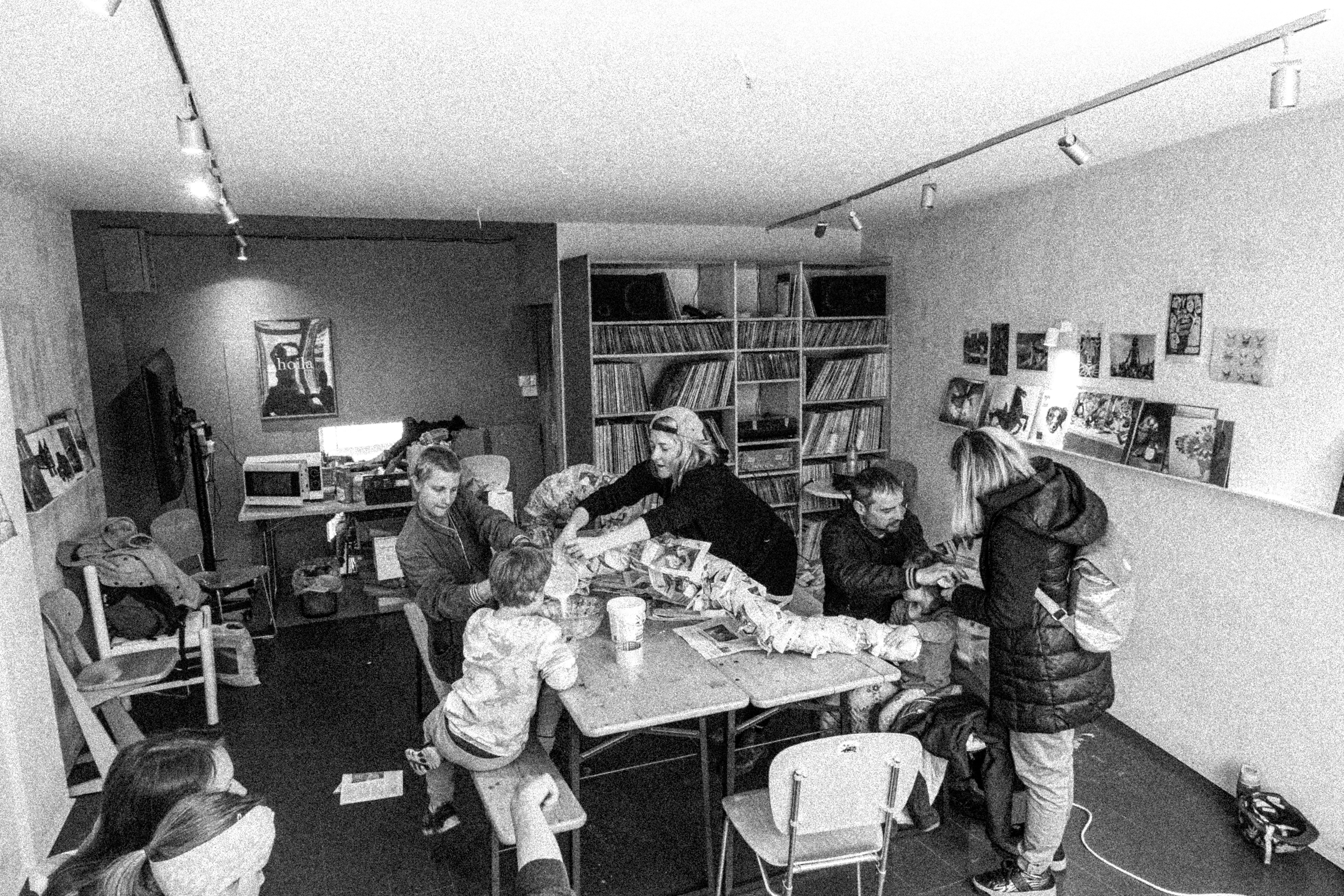
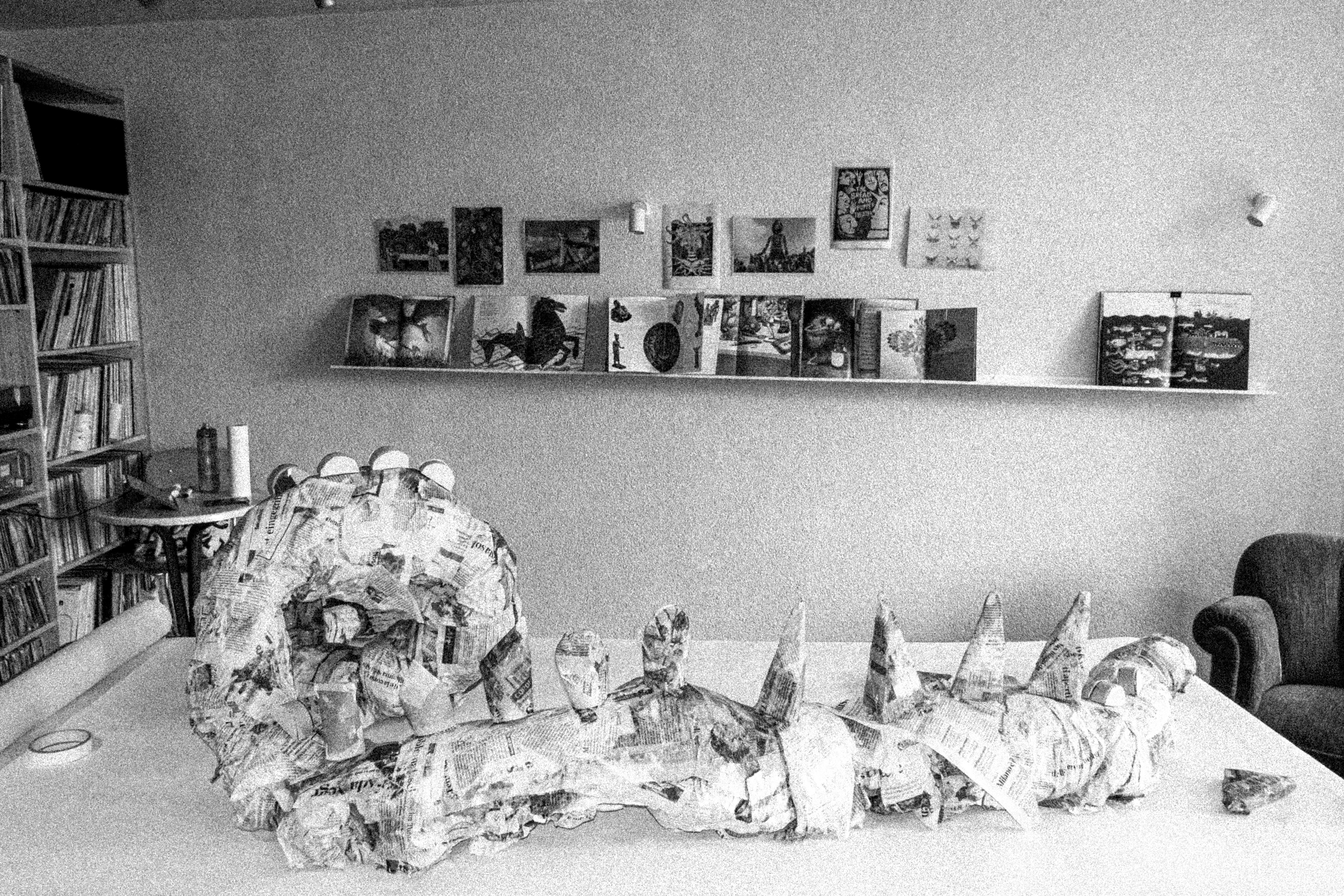
Building
The project’s central creature evolved from initial ideas of an elephant and a mammoth, to a dragon tail, and finally a five-piece installation of a curving dragon’s back. Inspired by the elephant structures of the Sound Festival, we developed sketches and scaled models, focusing on a modular design consisting of hut-like structures. The structures were designed to be both a cozy space for children and a gathering place for adults. Using CAD software to model the design, 1:1 scale print-outs were made to enable hand-cutting the timber, assembling the structures using threaded rods and fastener bolts. The team learned from prior building sessions, and emphasised clear communication on measuring, cutting, and labeling pieces of the structure to ensure an inclusive process.

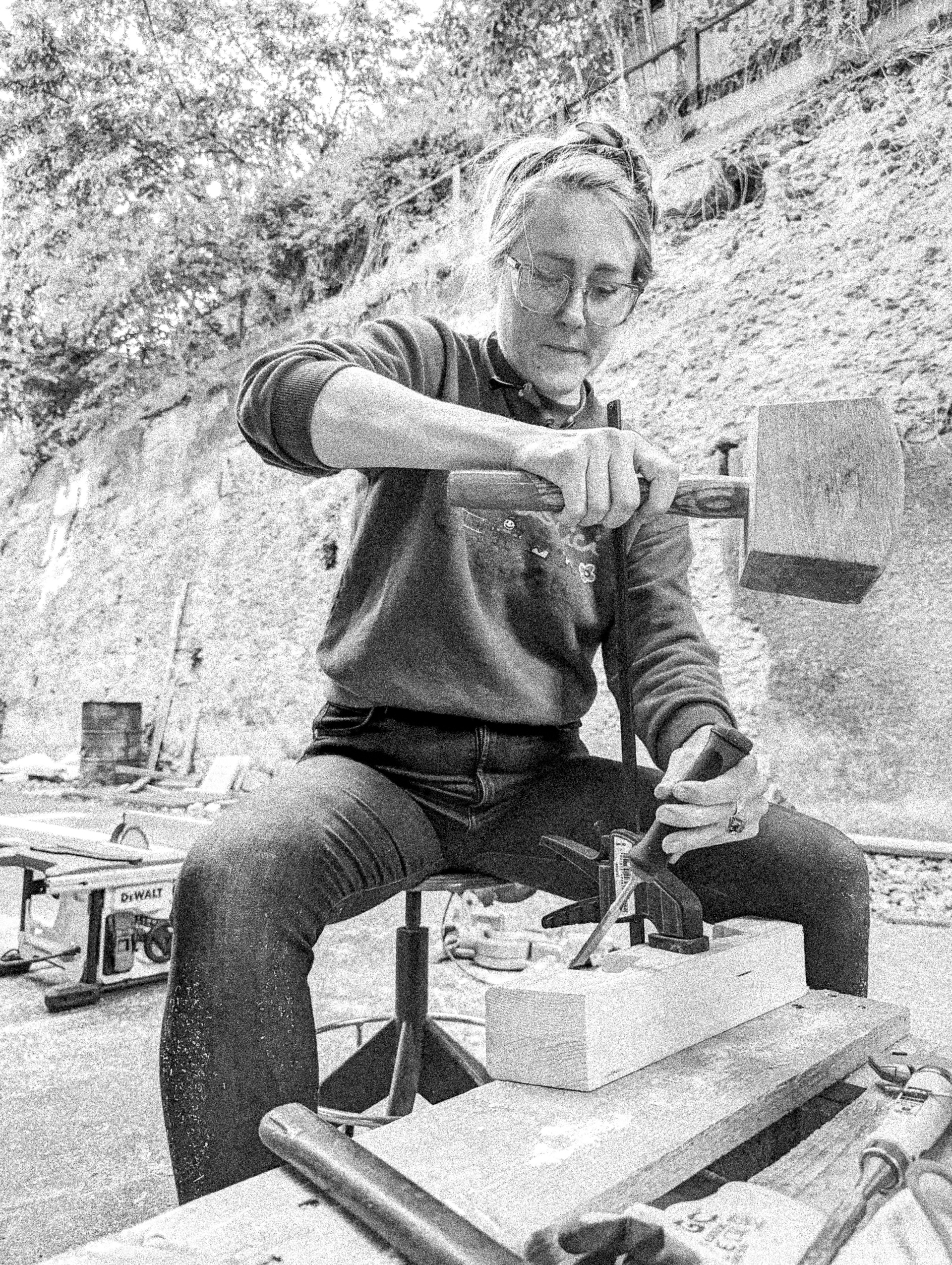

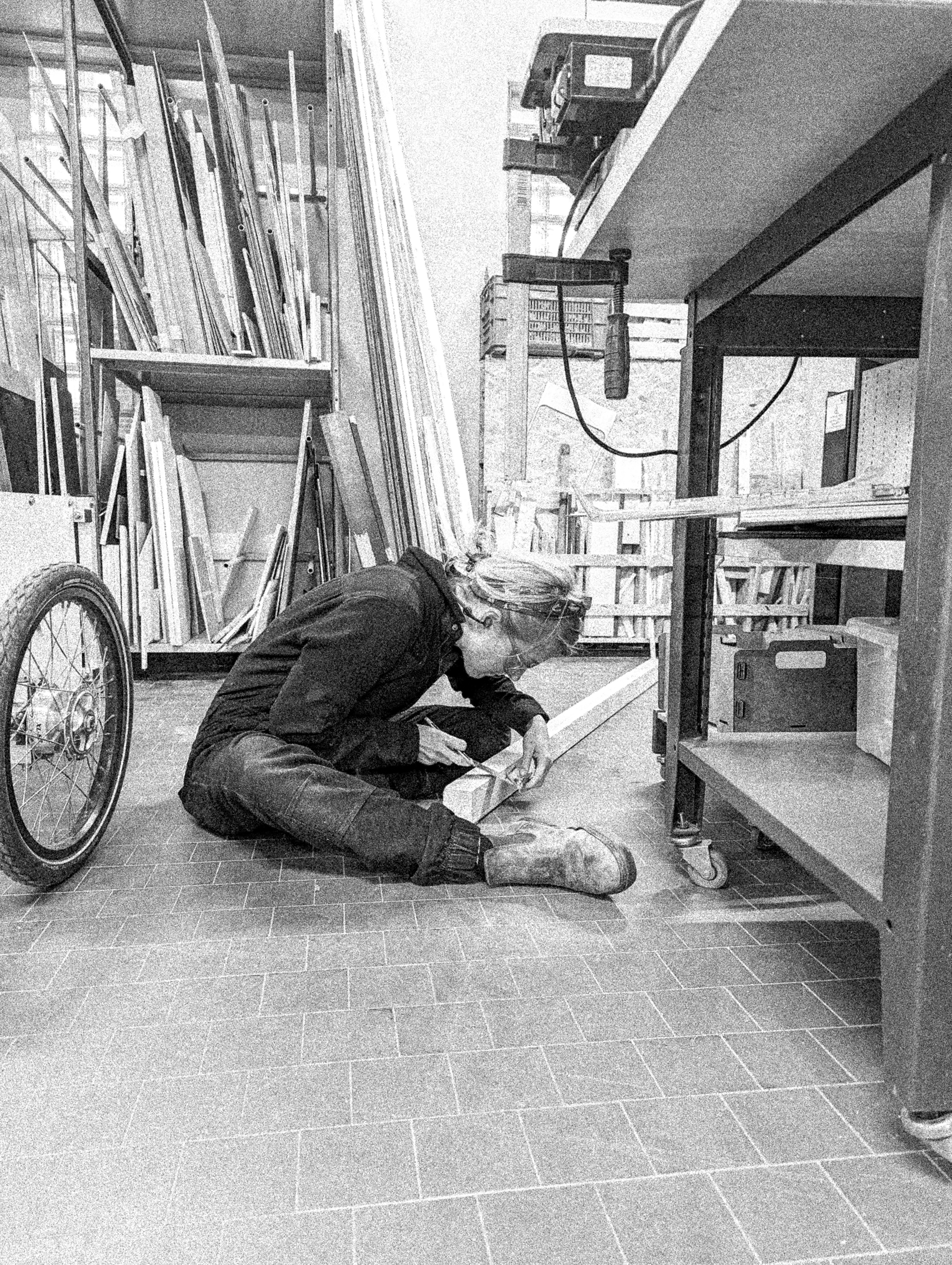
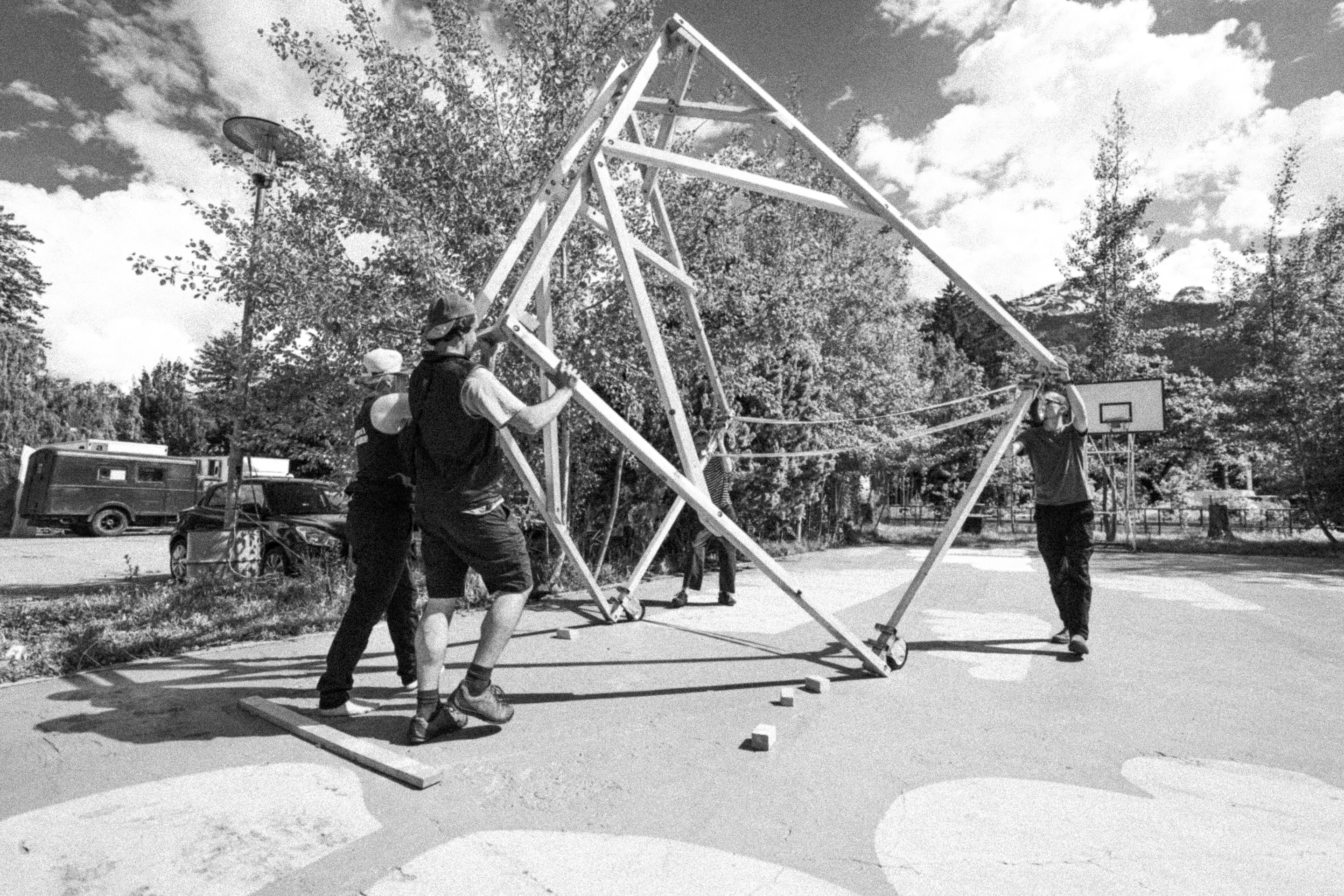

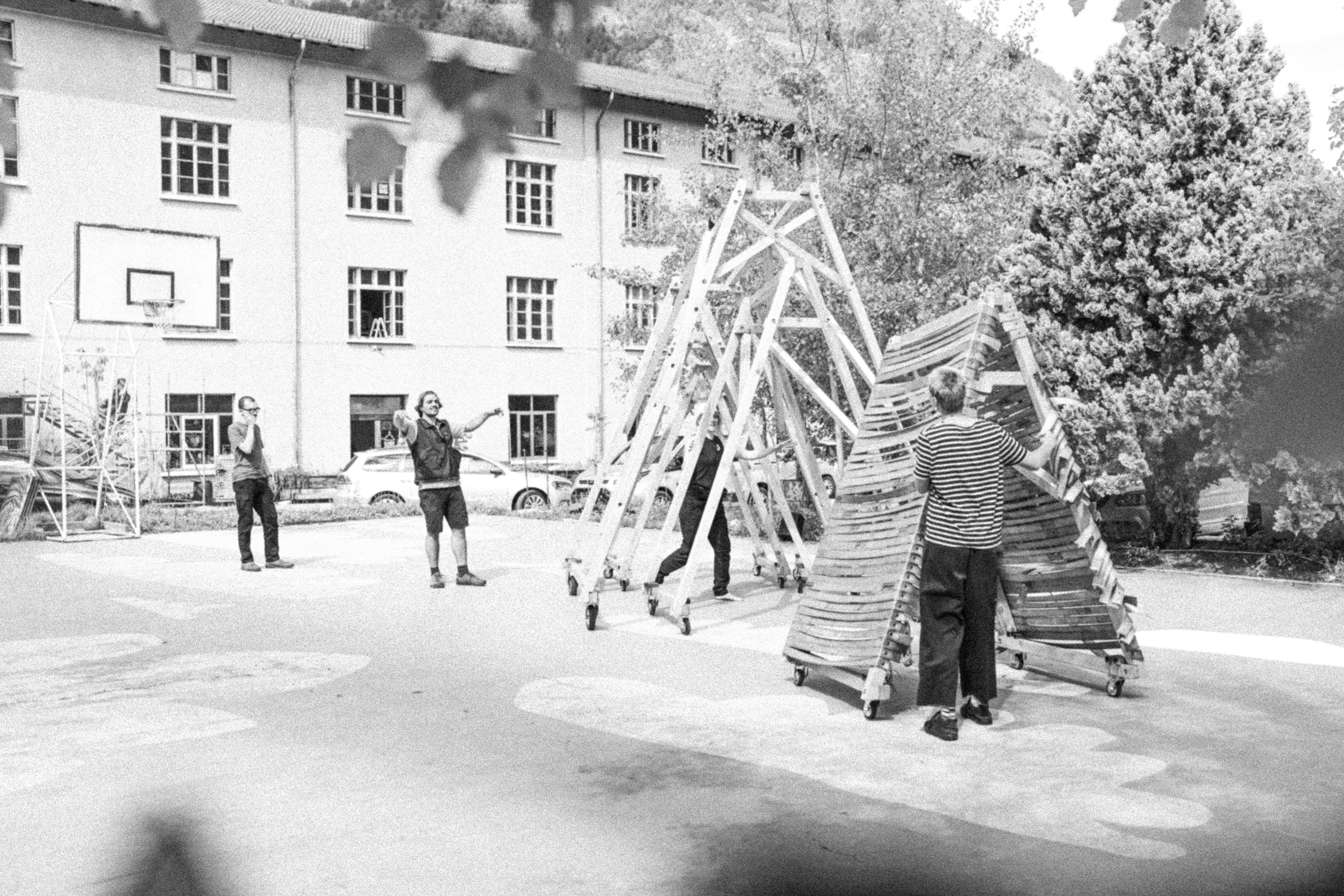

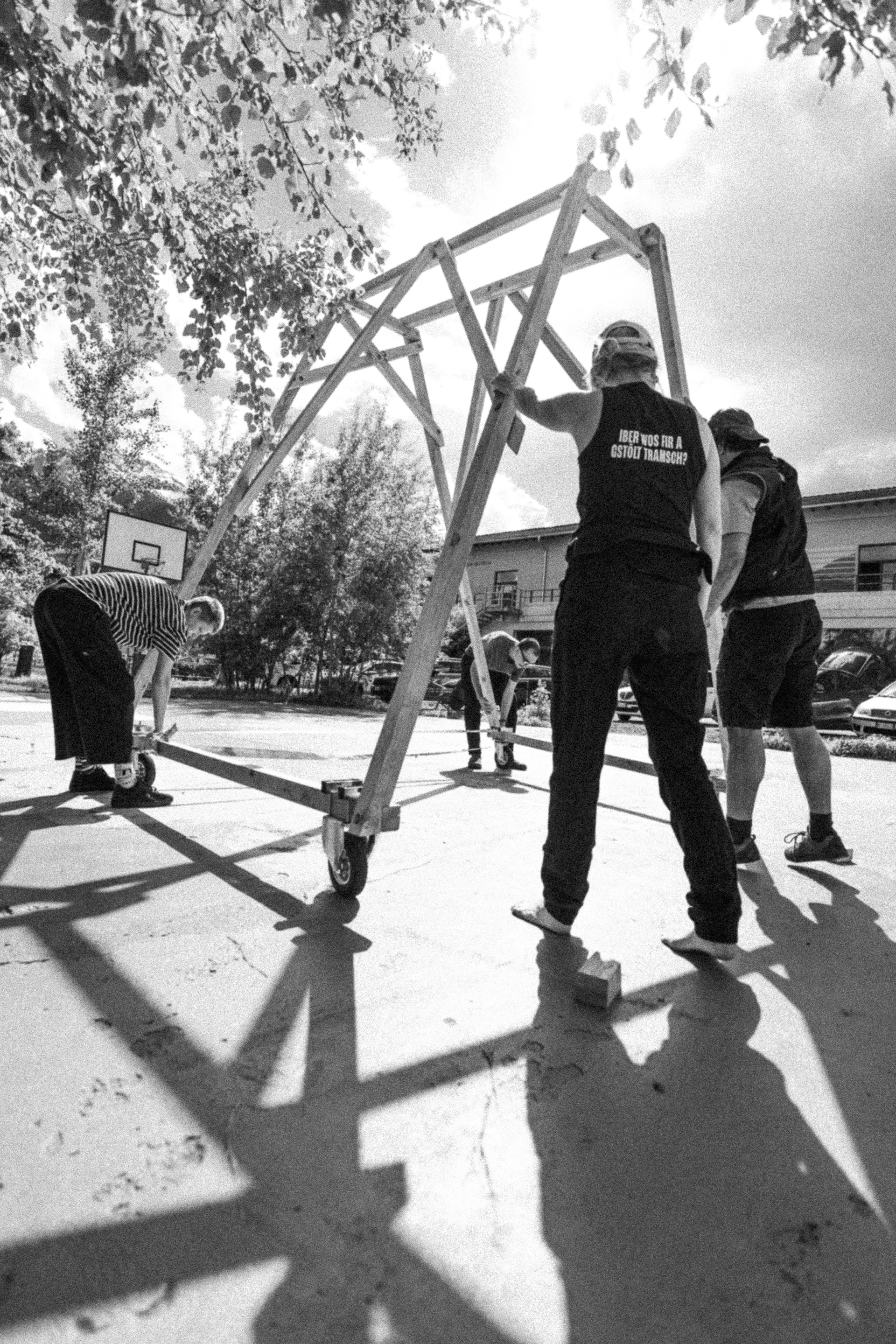
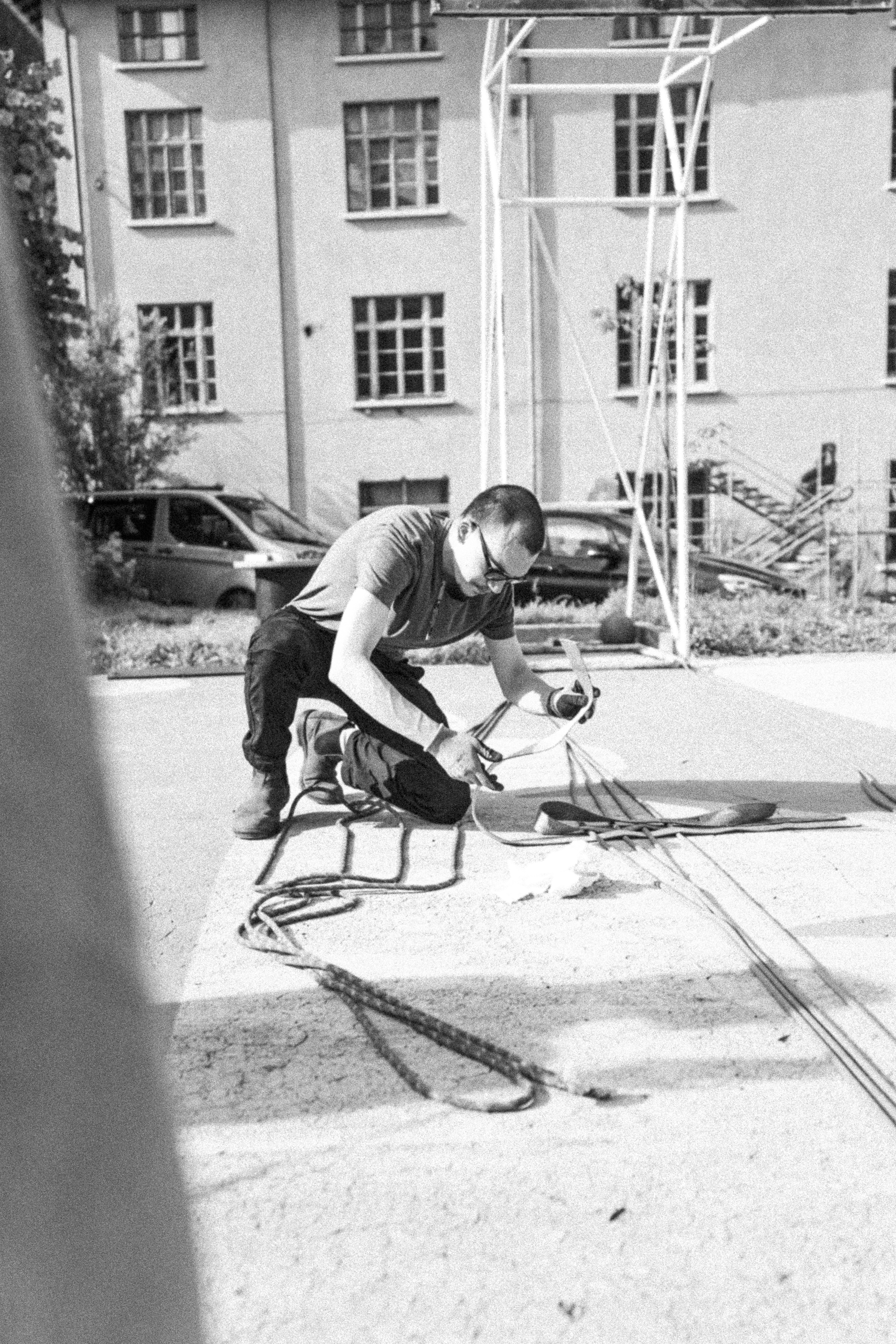
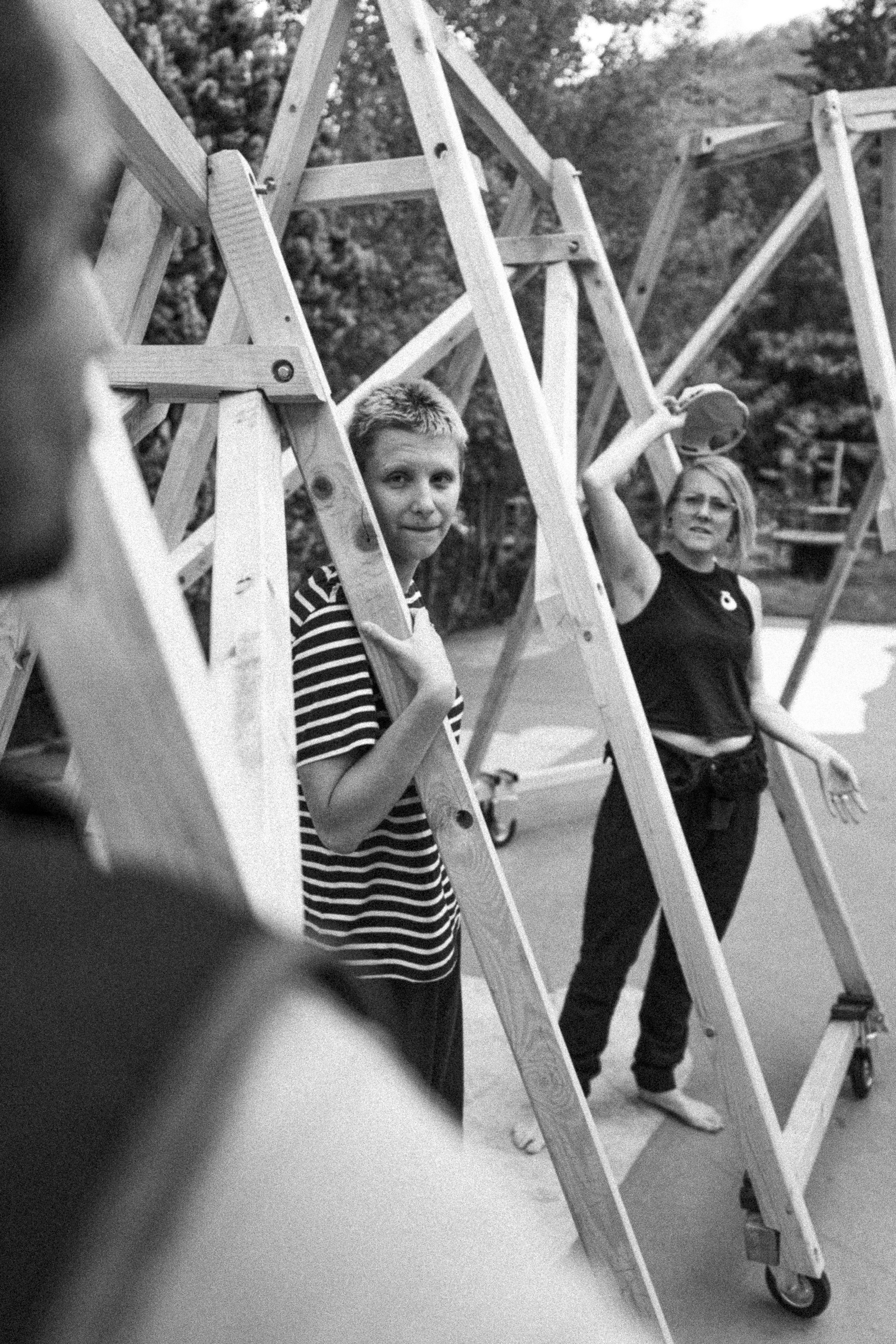
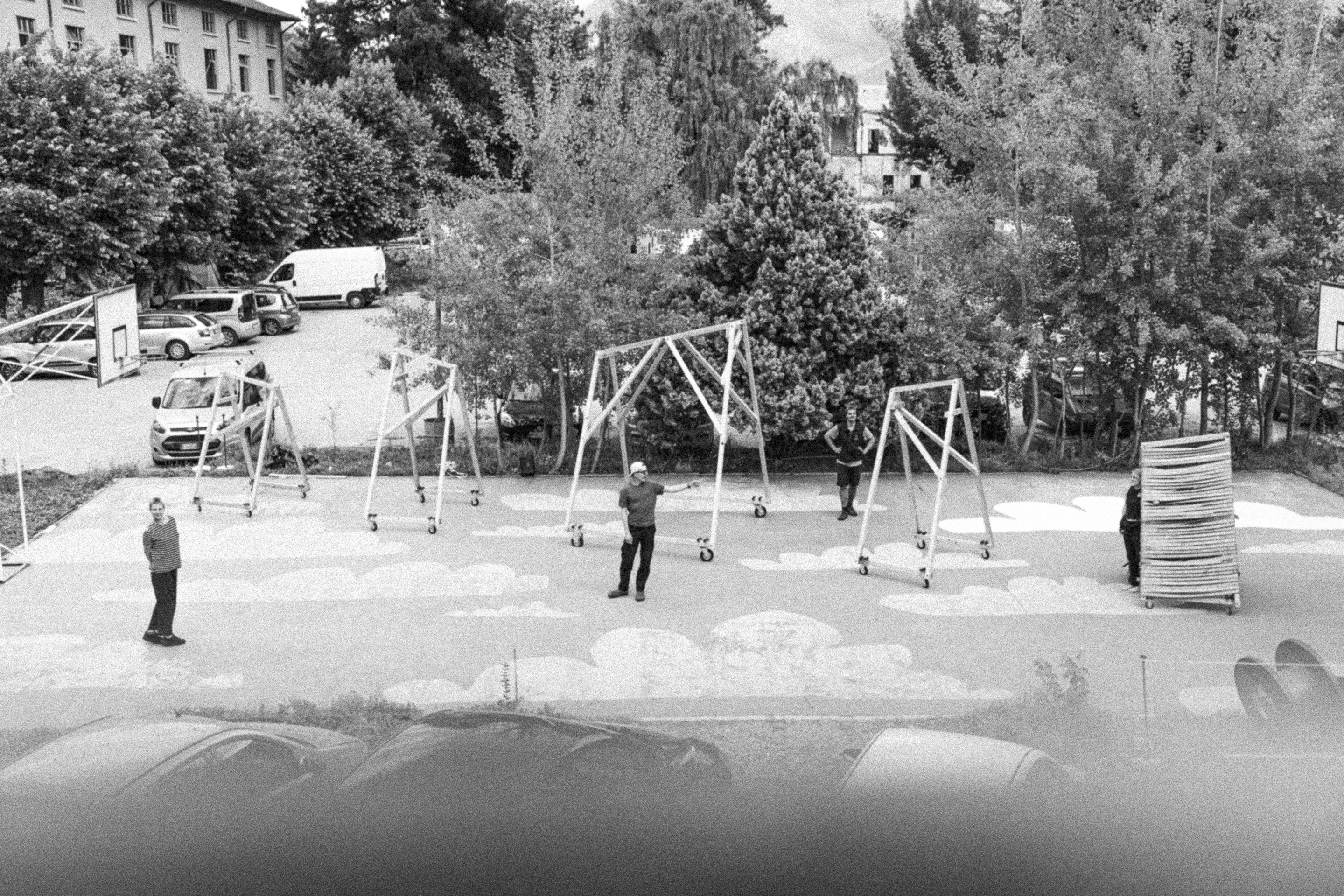
Weaving
We integrated weaving as a collaborative method using decommissioned tension belts, a discarded material sourced from a local trucking company, which became a metaphor for the project itself. At the denk.Mal community festival in May, the team established stations for cutting and assembling, weaving, and storytelling, using posters with questions in multiple languages. Participants were invited to work on the dragon spine structures, using the tension belts for weaving and creating space for both tool use and storytelling. We found that participants responded to questions about their relationship to the region’s history and trauma, and that the use of myth and creatures offered a way to explore difficult themes of conflict and discomfort.


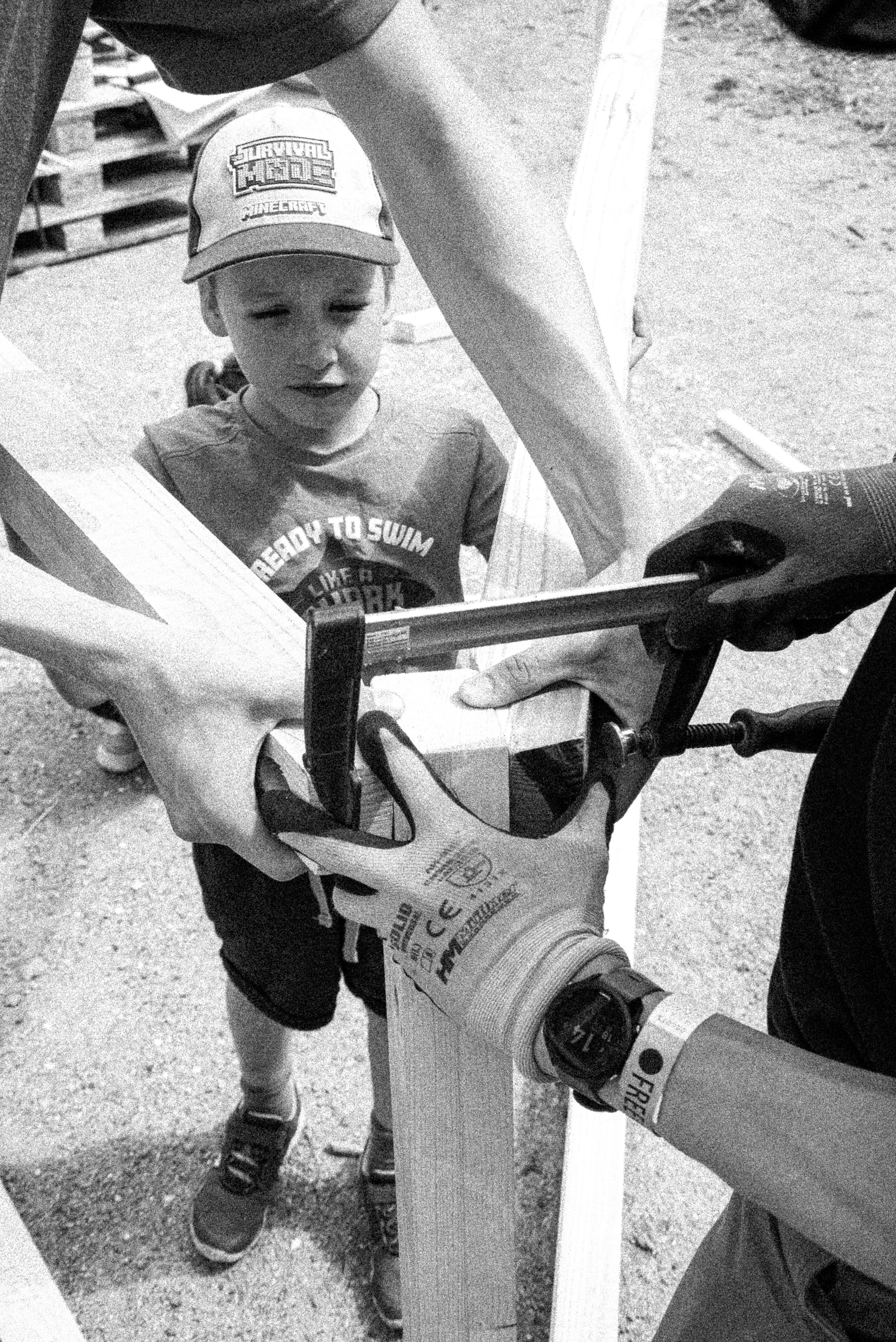
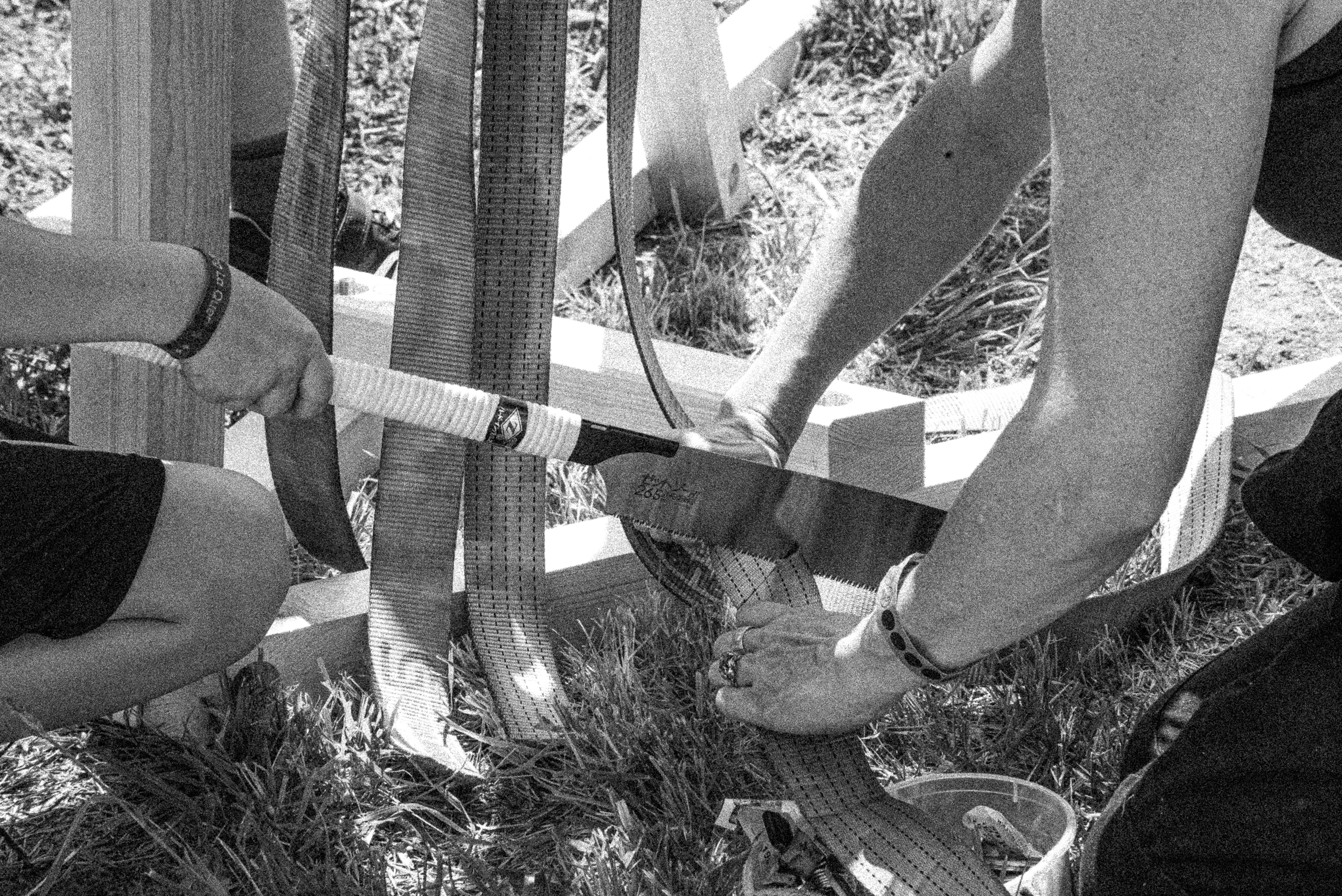


Procession
The project culminated in a procession from the BASIS barracks to the Schaufenster exhibition space in town, connecting two participatory events. The procession was a vibrant event with participants pushing, pulling, and interacting with the structures. Children played a significant role in guiding the dragon along the route, which was followed by a community weaving session. The procession and weaving event offered a moment of celebration and community building that the team recognised is important for more vulnerable conversations to occur. The structures were designed to be movable, colourful, and a reminder of a local story and, through the use of recycled materials, ecologically mindful.

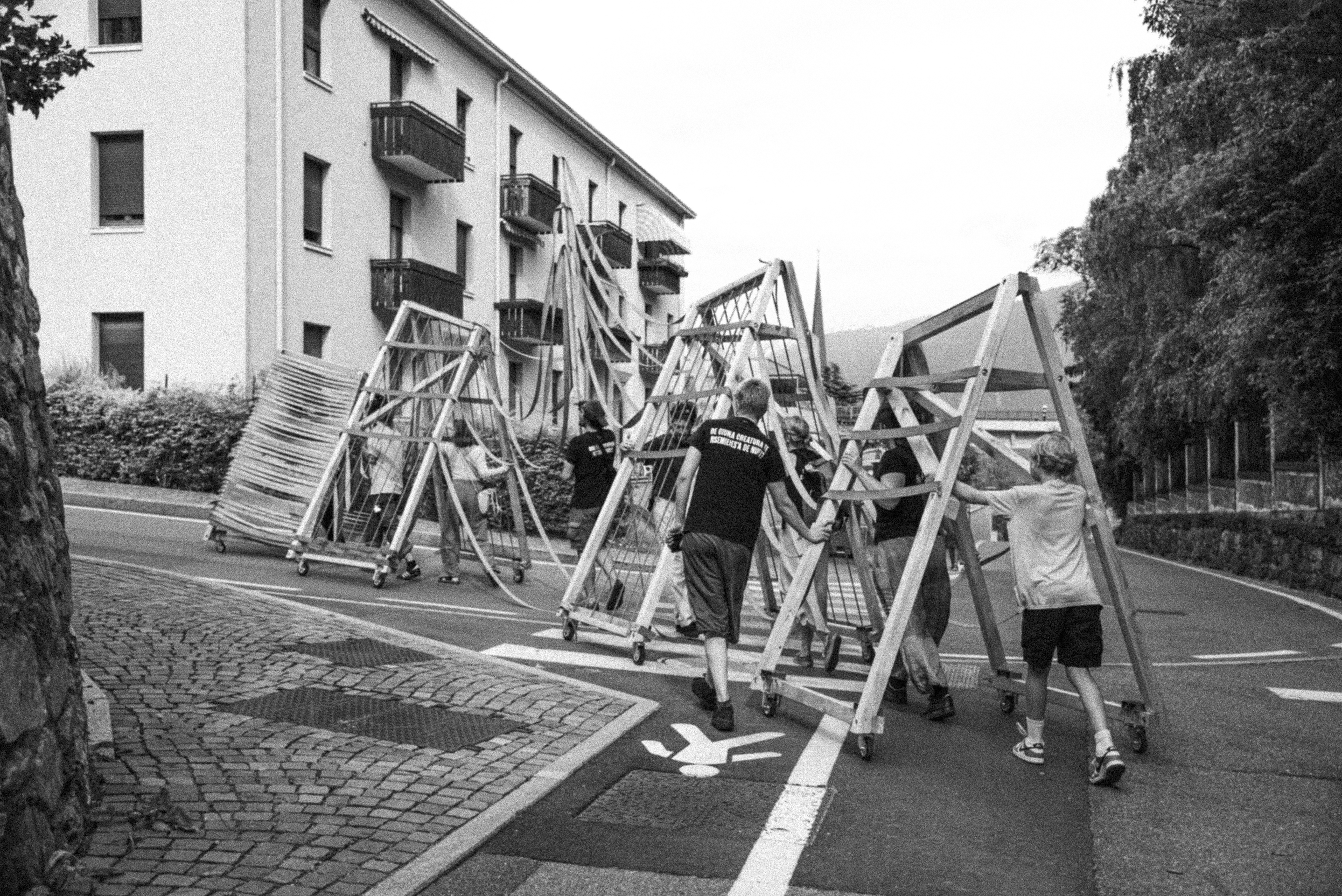


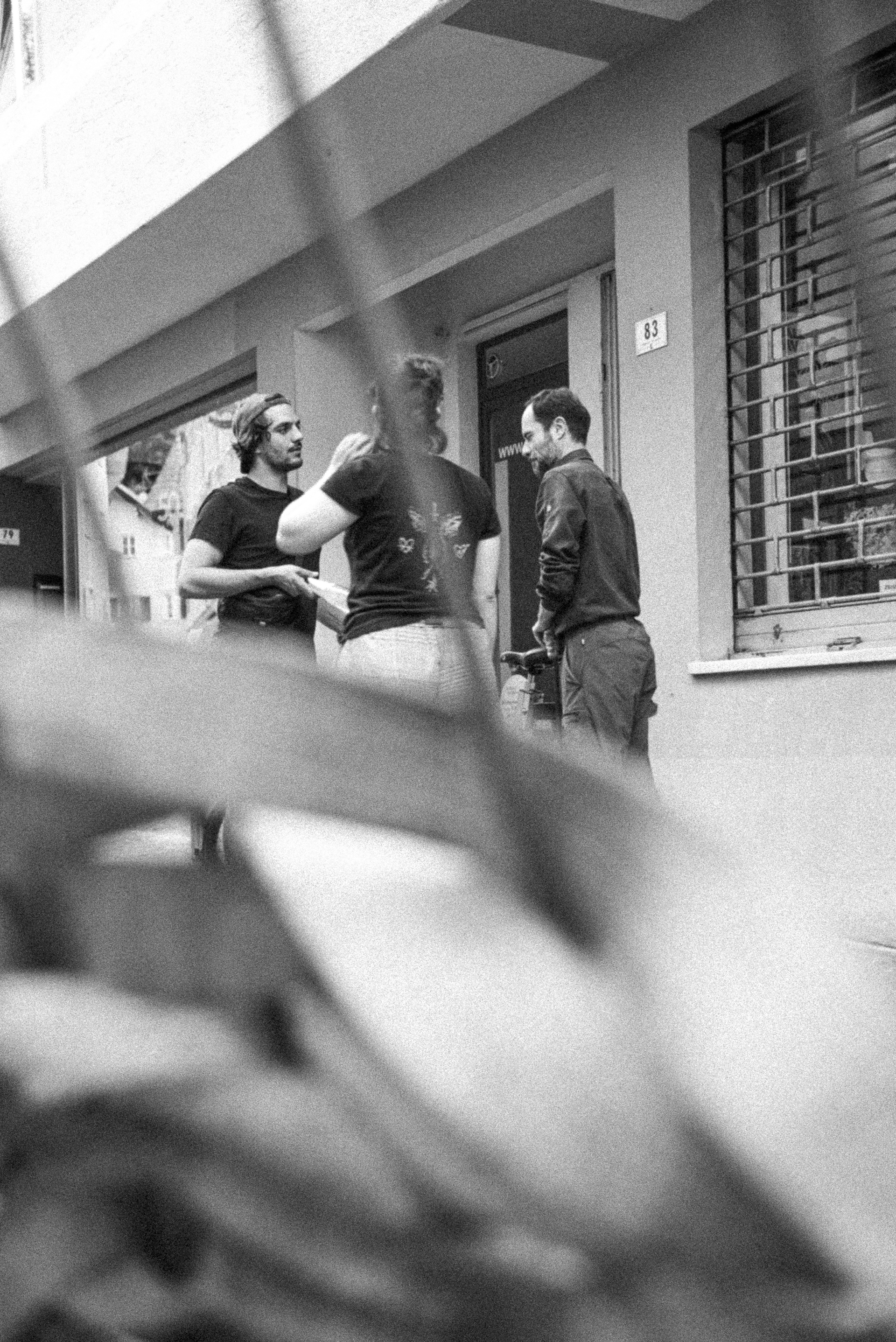

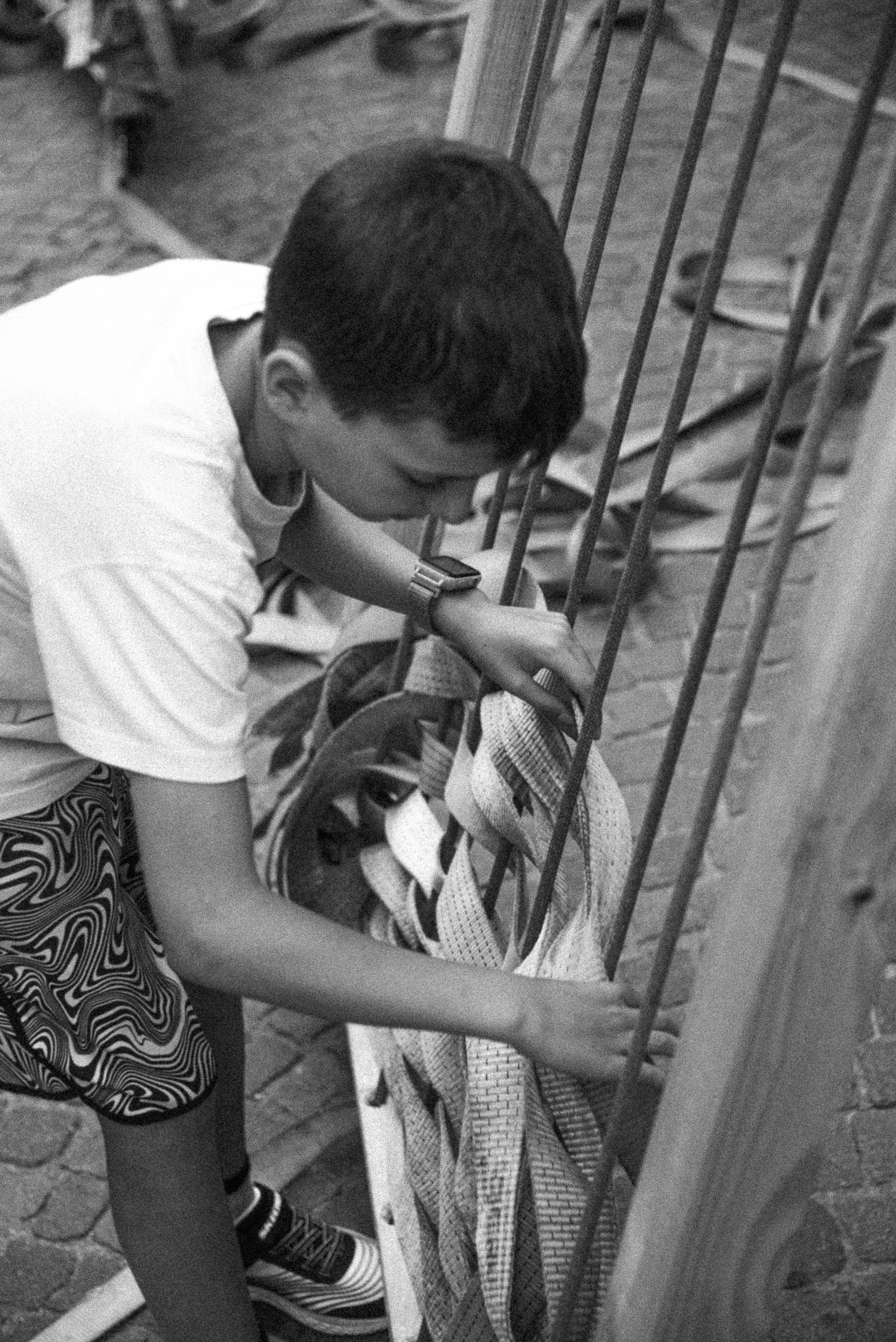

Storytelling
To recount our experience in putting this project together, we to took inspiration from the very story that re-emerged from our work: the dragon of Gadria. The Great Turning, or, A Story About How We Hold Each Other in TImes of Great Change is a fairy tale about our experience as a group of four eco-social designers, working together in search of our dragon.
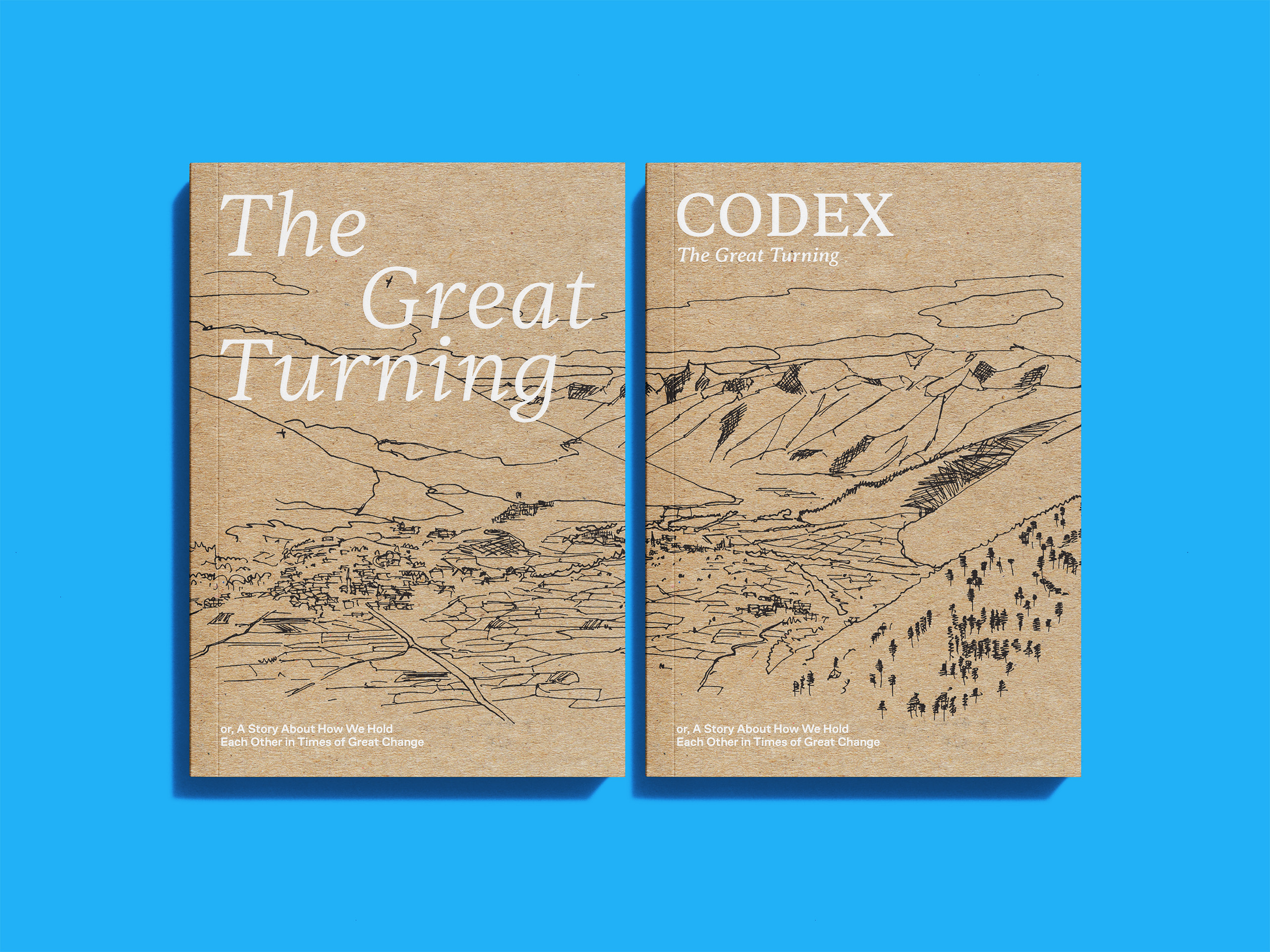
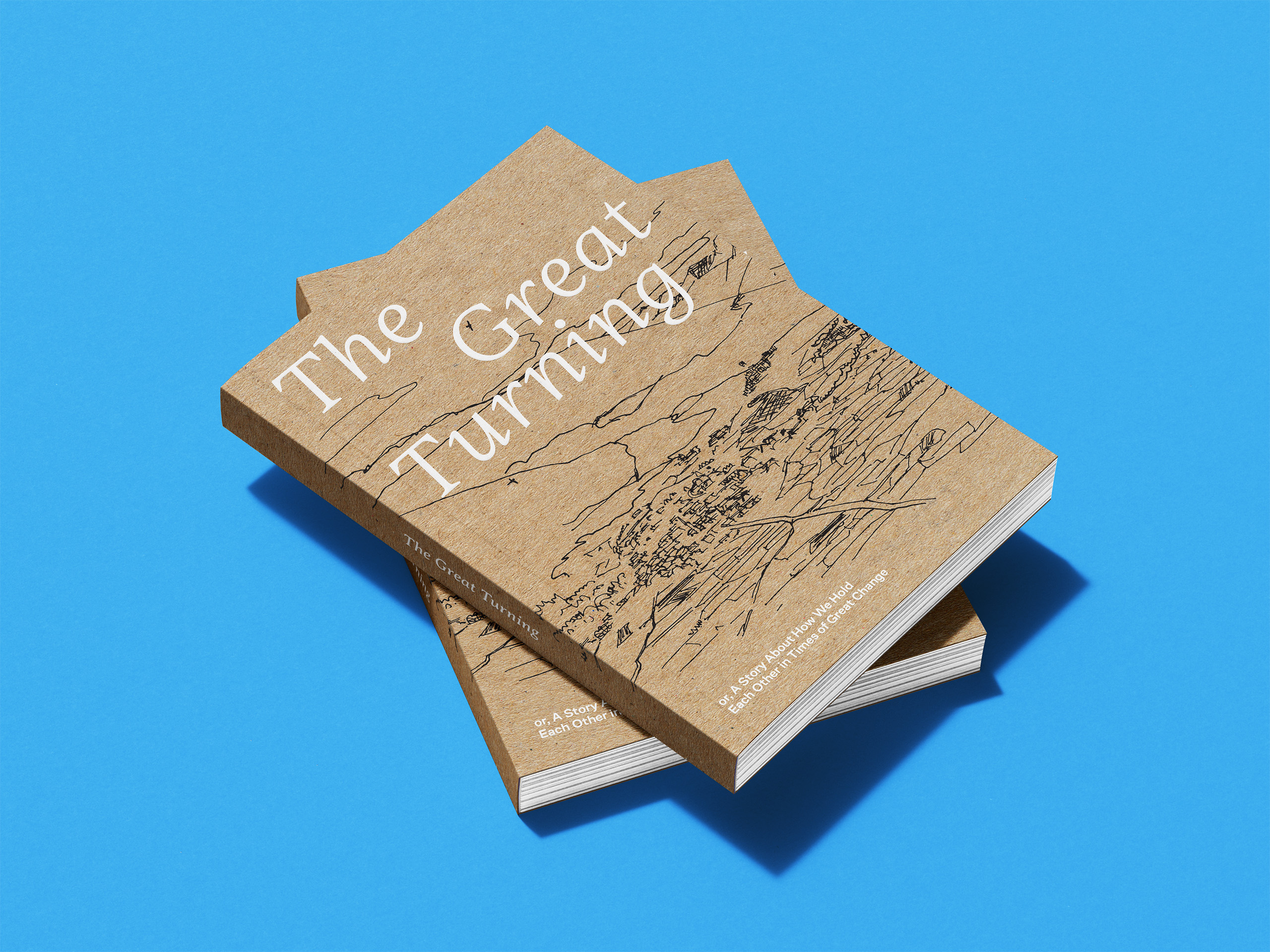
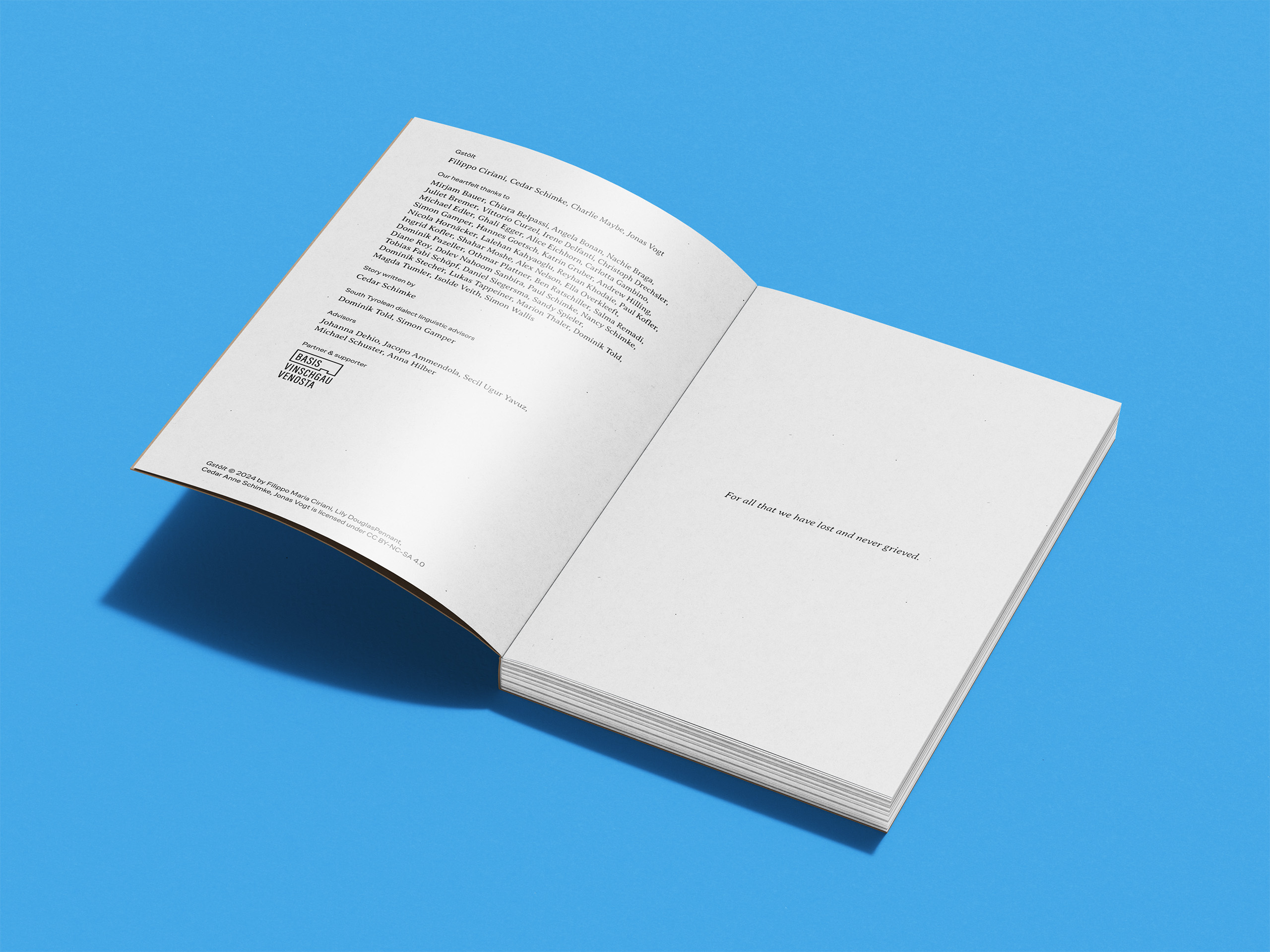
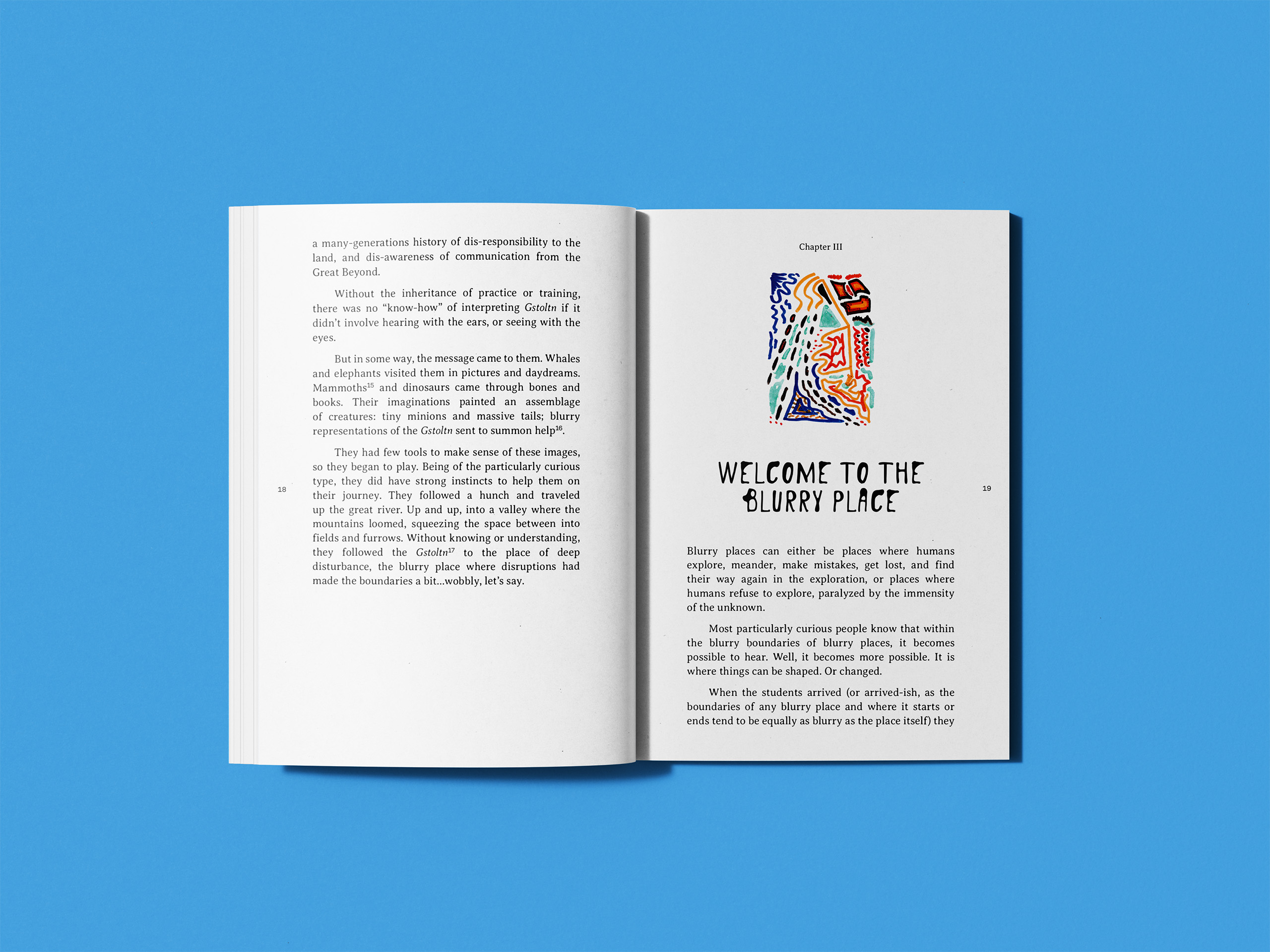

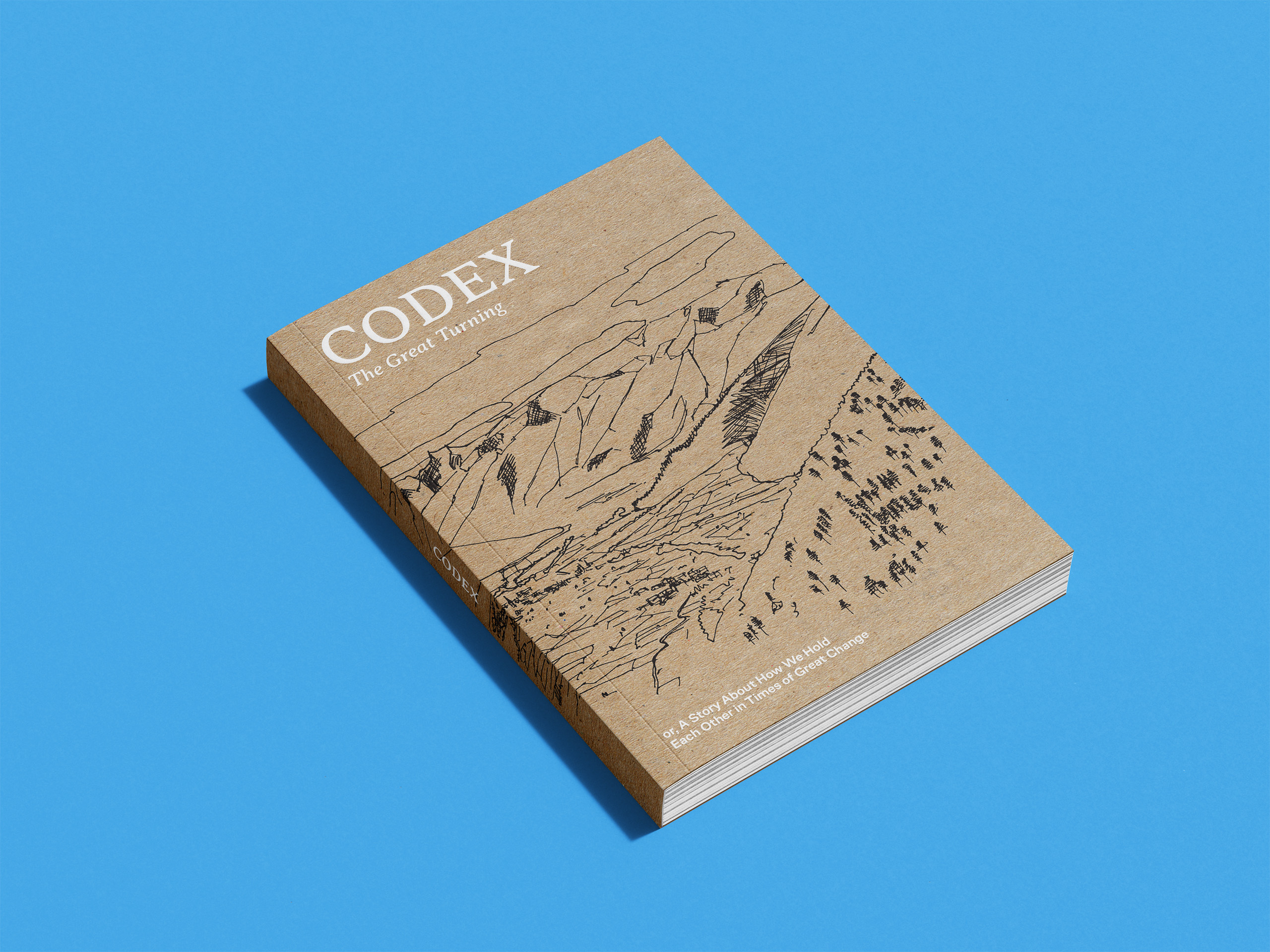
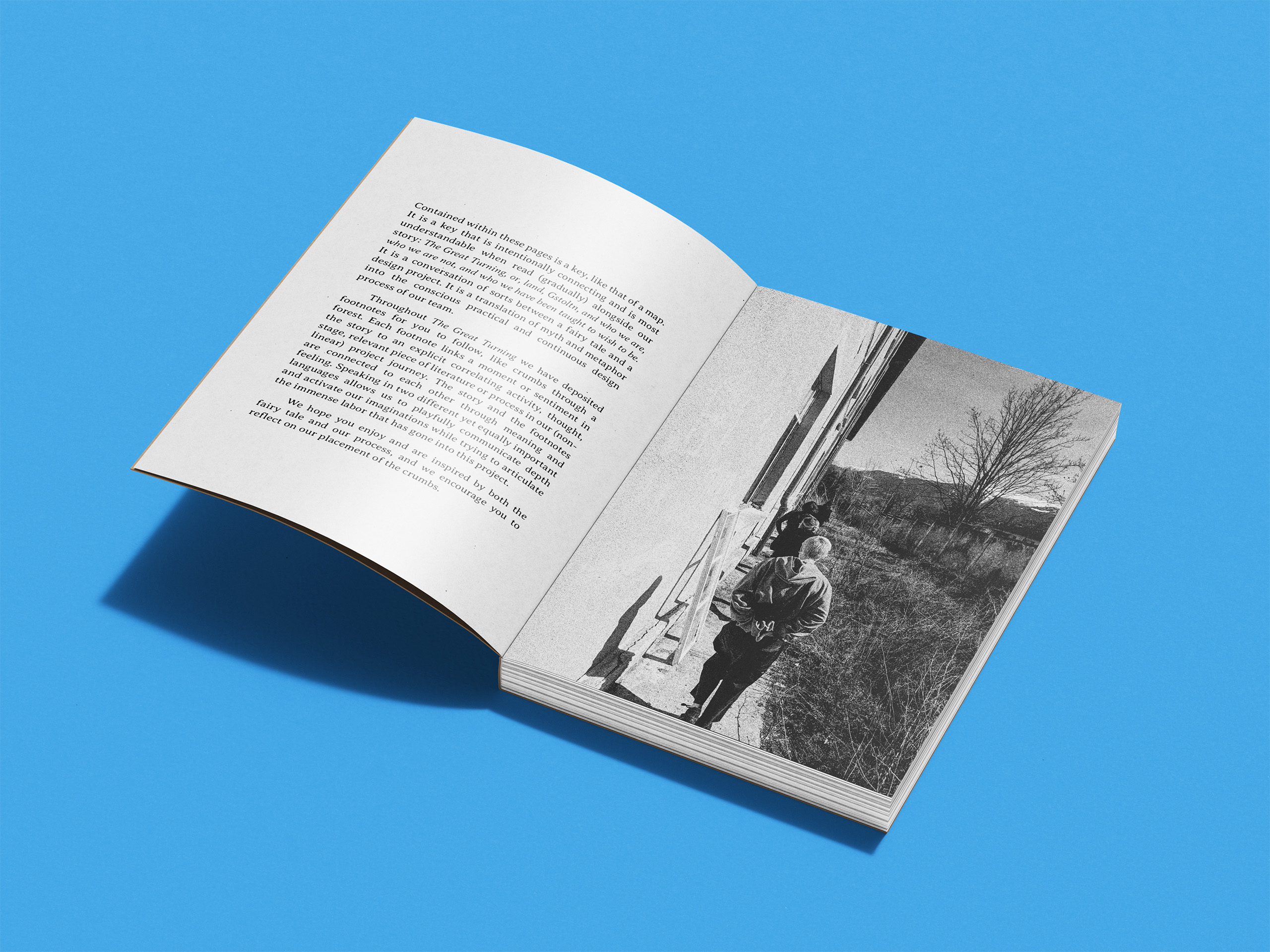
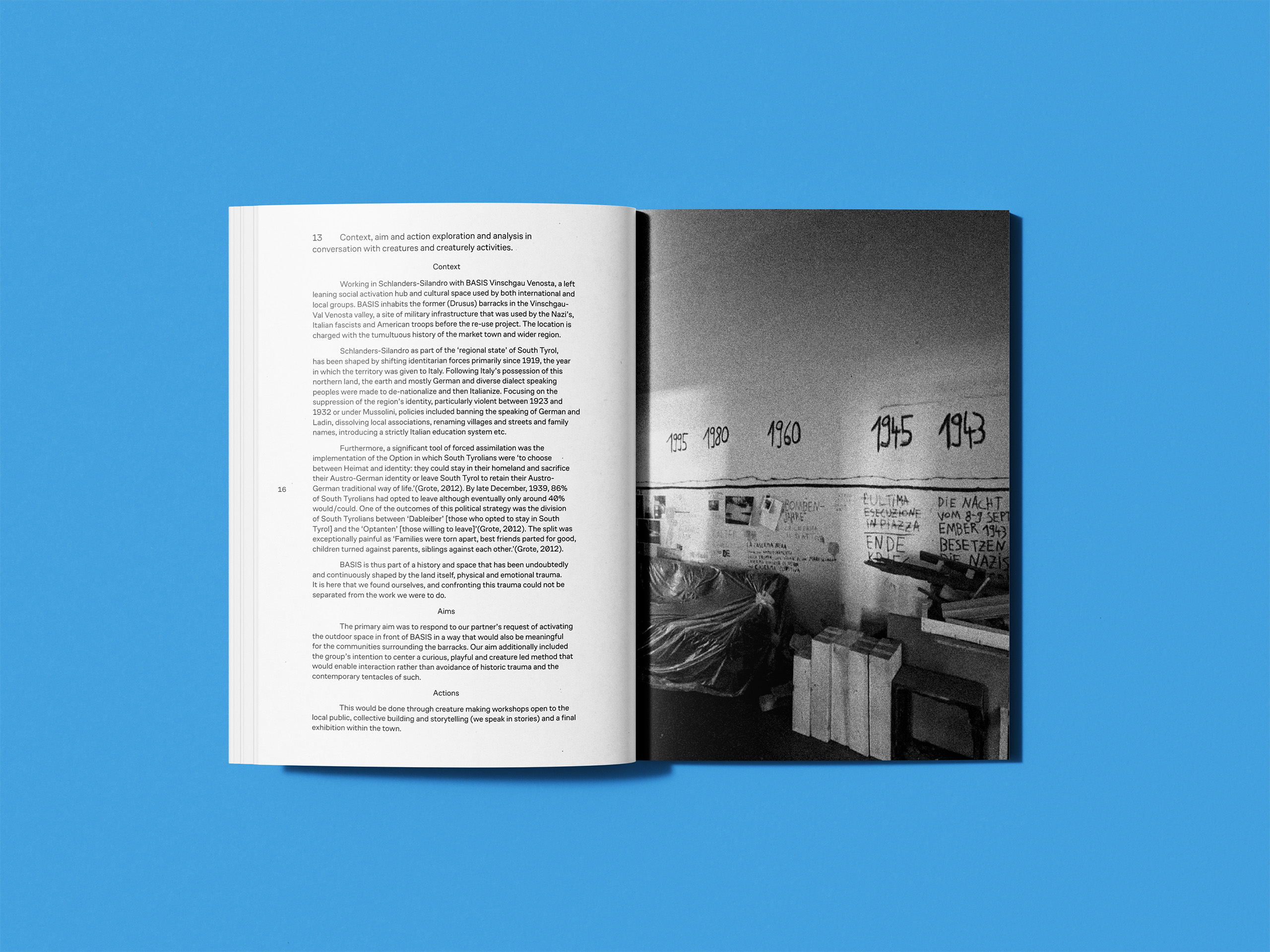
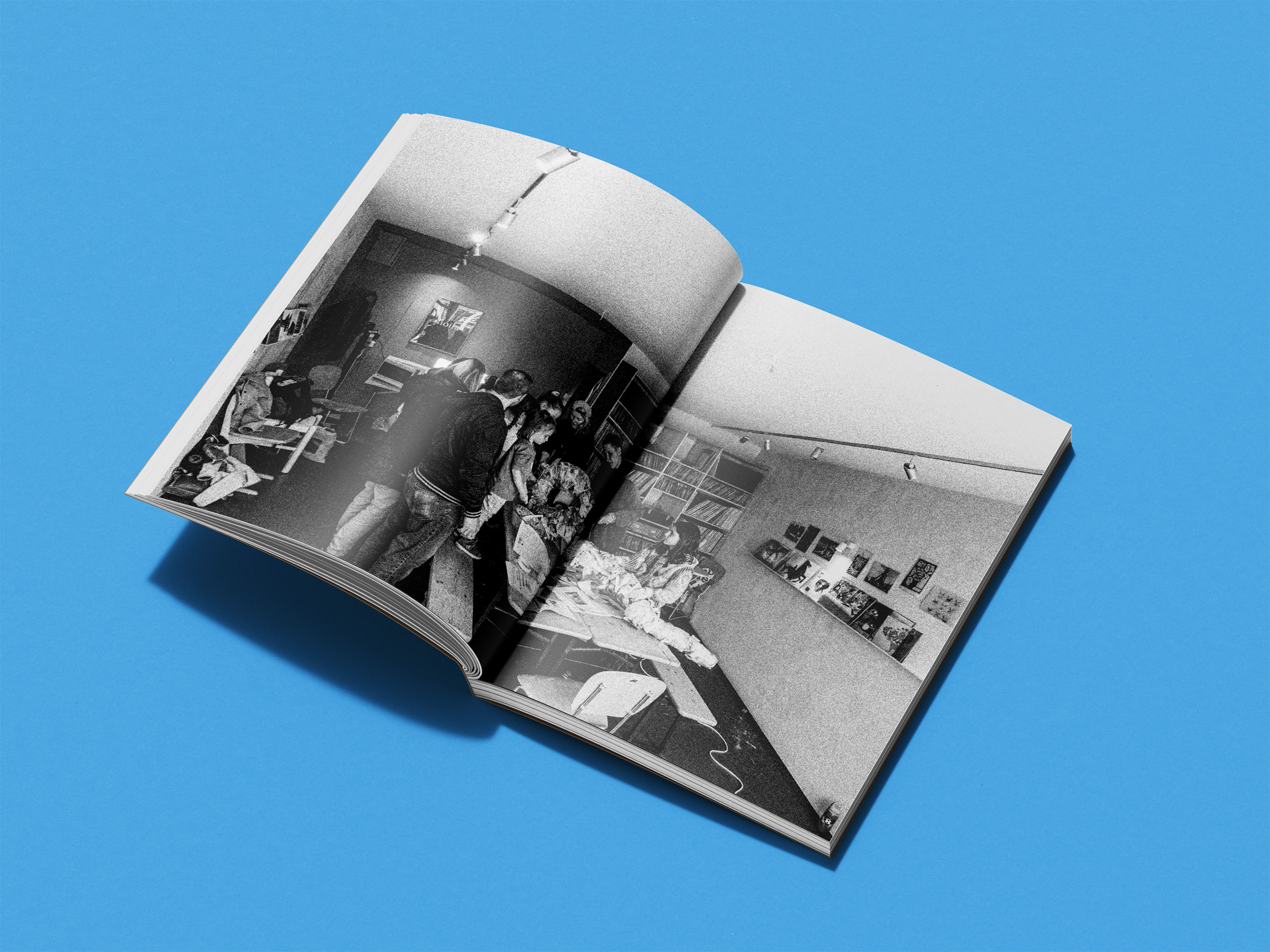
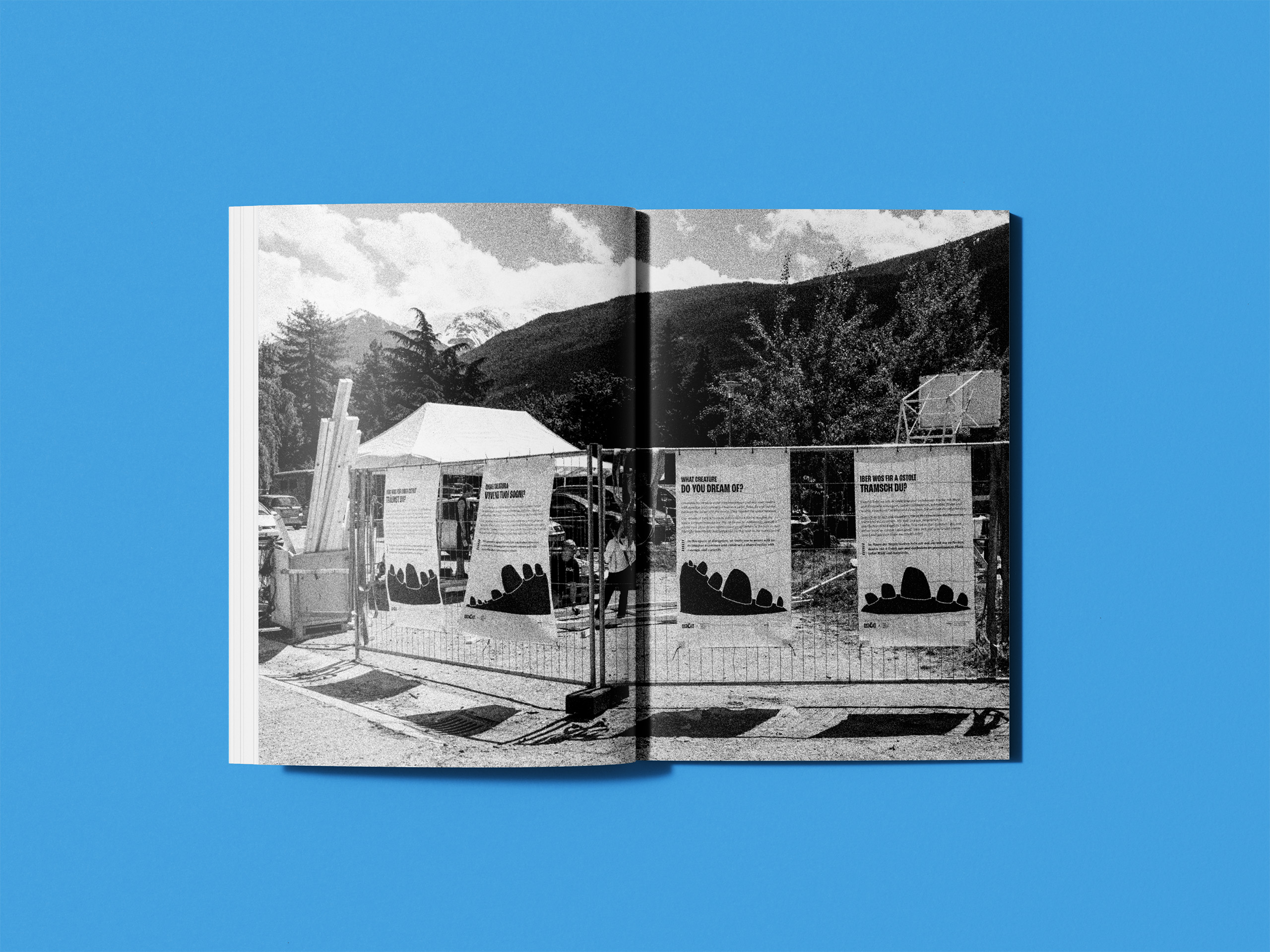
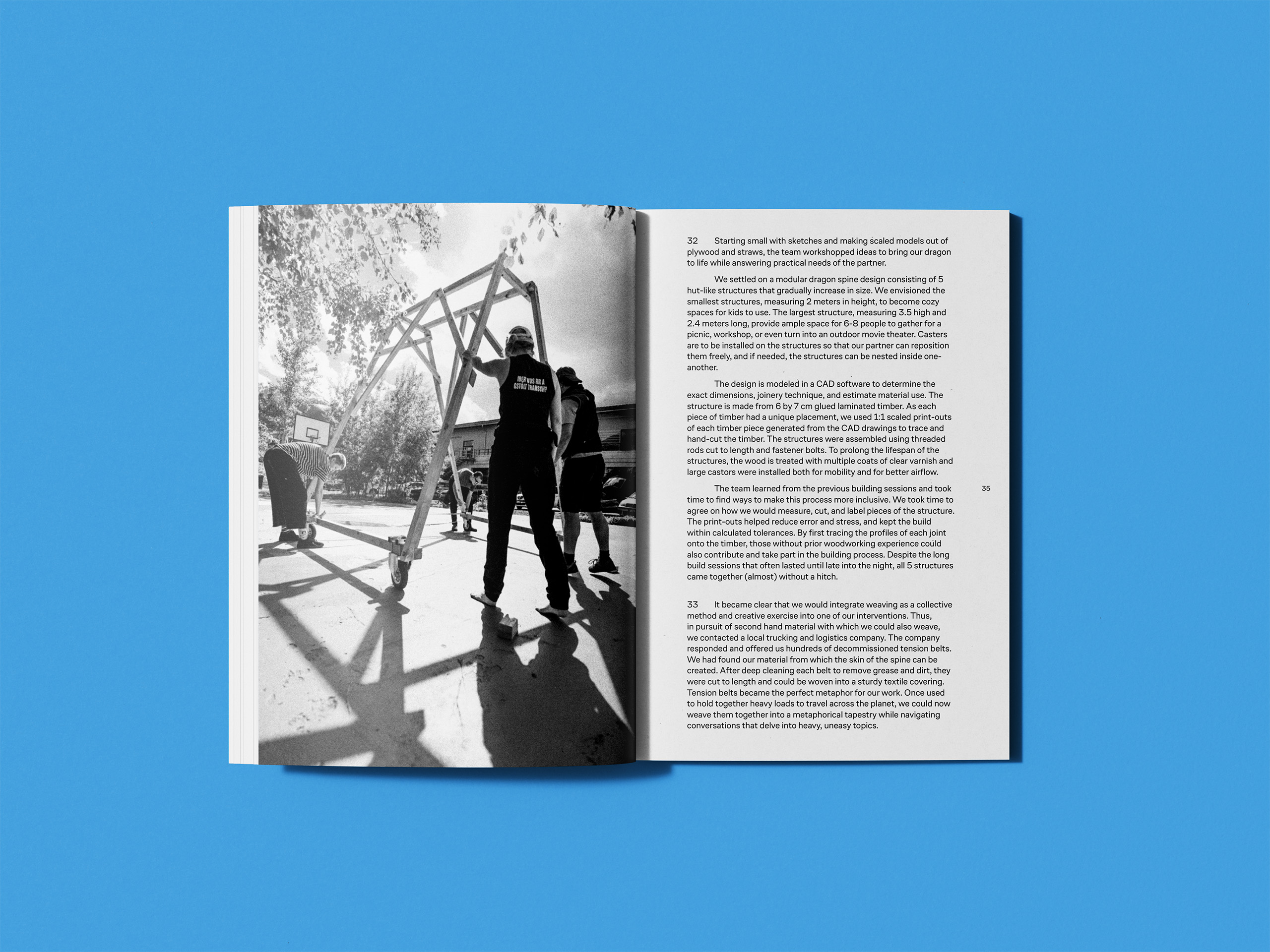

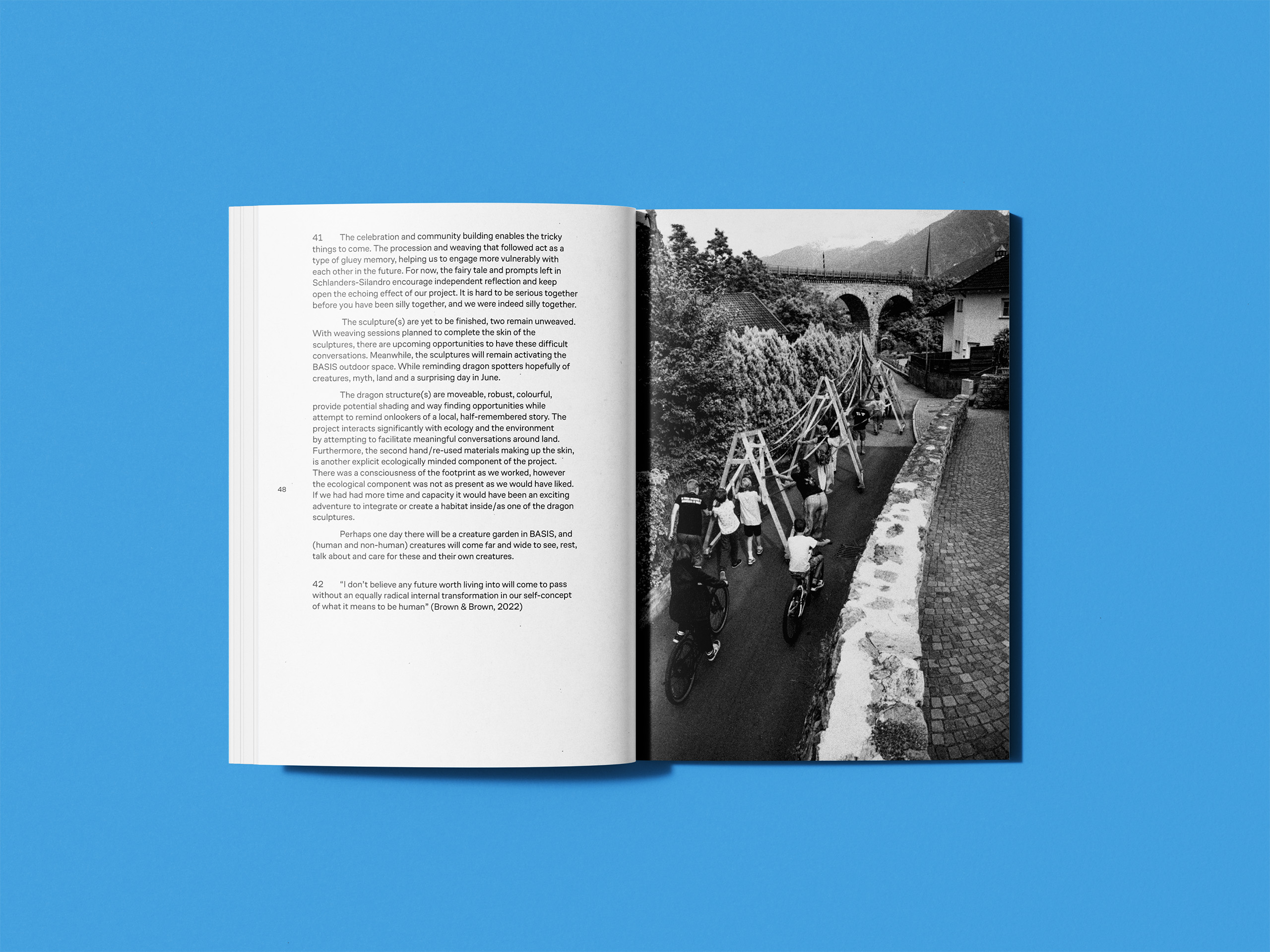
The Great Turning and Codex
BASIS Vinschgau Venosta
team
Filippo Ciriani, Jonas Vogt, Charlie Maybe, Cedar Schimke
Advisors
Johanna Dehio, Jacopo Ammendola, Seçil Ugur Yavuz, Michael Schuster, Anna Hilber
additional Photography
Dominik Told, Michael Schuster
South Tyrolean dialect linguistic advisors
Dominik Told, Simon Gamper
with thanks to
Mirjam Bauer, Chiara Belpassi, Angela Bonan, Nachie Braga, Juliet Bremer, Vittorio Curzel, Irene Delfanti, Christoph Drechsler, Michael Edler, Ghali Egger, Alice Eichhorn, Carlotta Gambino, Simon Gamper, Hannes Goetsch, Katrin Gruber, Andrew Hilling, Nicola Hornäcker, Lalehan Kahyaoglu, Reyhan Khodaie, Paul Kofler, Ingrid Kofler, Shahar Moshe, Alex Nelson, Ella Overkleeft, Dominik Pazeller, Othmar Plattner, Ben Ratschiller, Salma Remadi, Diane Roy, Dolev Nahoom Sanbira, Paul Schimke, Nancy Schimke, Tobias Fabi Schöpf, Daniel Siegersma, Sandy Spieler, Dominik Stecher, Lukas Tappeiner, Marion Thaler, Dominik Told, Magda Tumler, Isolde Veith, Simon Wallis
